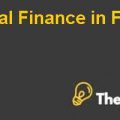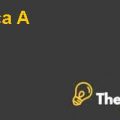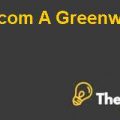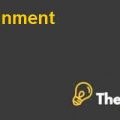THE LAUNCH OF A NEW WIRELESS CONTENT TECHNOLOGY PHASE I
Recommendation of Percentage Mark-Up on Price and Concerns on Survey Report
However, the recent survey conducted in order to establish the price and demand for subscription service shows that the demand of subscription is not very much elastic because percentage change in price is higher than the percentage change in demand and subscription service is subject to price elasticity of demand as 0.73. Moreover, the subscription service has already been tested and the results show that customers are not very much interested in the service that may be due to the pricing of subscription service. Therefore, a 27% mark up is recommended based on the two facts that recent launch has not attracted the customers and the subscription service is not very much elastic with respect to a change in price.
Furthermore, since the device will be sold at a throw away price, therefore, the device is assumed to be only 10% of complete package price and remaining 90% is assumed to be the price of subscription service.
Meanwhile, the survey conducted by the company serves the purpose to some extent but more accurate and better results could have been achieved if some changes were made into the survey. The first thing that this survey lacks is the concentration on each component of the offer, i.e. device and subscription offer. However, there is no such differentiation has been made in order to produce more accurate data relating only to the subscription services’ price and demand. Meanwhile, the sample data selected for the survey was very small where total U.S population is around 318 million and a sample size of 1000 subjects represents around 0.03 basis point of the whole population.
In addition to this, the survey required each subject to test the service for several minutes, which might have consumed their shopping time and in order to save time they might not have shown interest in the survey, consequently, they might have given in appropriate response to the survey which could lead the survey to wrong finding. (Exhibit 1)
PHASE II
Price Recommendation Based on Own-Price Elasticity of -0.75 with Standard Error of 1.2
Negative price elasticity of demand, i.e. -0.75, shows that every 40% increase in price of service subscription will lead to 30% decrease in demand of service subscription. In other words, negative price elasticity of demand of -0.75 represent that every $1 increase in price of service bundle will decrease the demands of service bundles by 0.75 in absolute terms and standard deviation of 1.2 reflects the deviation of variables on which the price elastic has been calculated, i.e. change in demand and change in price of service subscription. However, -0.75 negative price elasticity of demand suggests that the price should be increased because the change in price of subscription service will not decrease the demand in equal proportion, consequently, the overall contribution from the service will be increased. However, standard deviation of 1.2 shows that the price and demand of service subscription are subject changes due to the different discounts and promotions offered by the retailers. Meanwhile the exact price cannot be recommended because the data in phase two does not provide information on price and instructions do not allow using data from other phases.
Moreover, the data used for calculation of price elasticity of demand in based on the average of price and demand at different retailers, which undermines the accuracy of price elasticity of demand. In addition to this, the price data is based on monthly subscription price whereas the demand data is based on the weekly demand, therefore, the comparison of price and demand is one which is not like for comparison, which further undermine the price recommendation.
PHASE III
DEMAND ANALYSIS
EVC Demand Curve for LG Device with Usual Contents
Please refer to Exhibit 2 below.
Revised EVC Demand Curve for LG Device with Additional Contents
Please refer to Exhibit 3 below.
PRICING ANALYSIS
Revenue-Maximization, Monopoly Price Based on Initial EVC Demand Curve
Monopoly price that maximizes the revenues will be based on data of customers’ willingness to pay for the subscription service on one month basis and each segment has to be evaluated in terms of their willingness to pay for subscription service. Moreover, different model of mobile phones (device) used in the conduct of research survey sould be given weight because the different consumer will use different mobile models in order to utilize the subscription service and the quality of subscription service will vary according the model and brand of mobile (device) used. Furthermore, revenue maximization monopoly price under the offer of selling bundled product, such as device and TV contents, will consider the customers willingness to pay for both the basic service on LG device and TV contents. However, the profit maximization price will be at the point where consumer’s willingness ..........................
This is just a sample partial case solution. Please place the order on the website to order your own originally done case solution.












